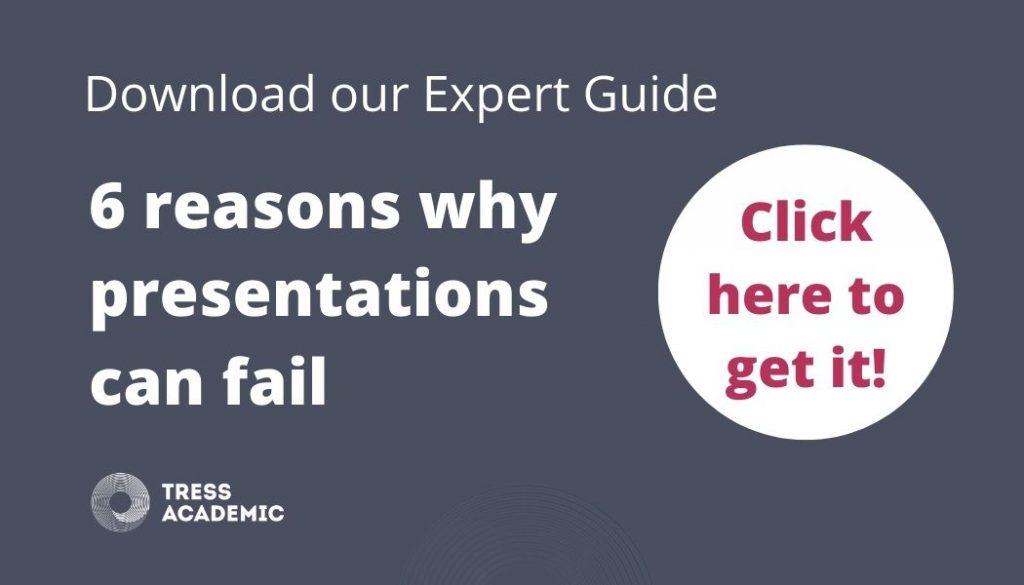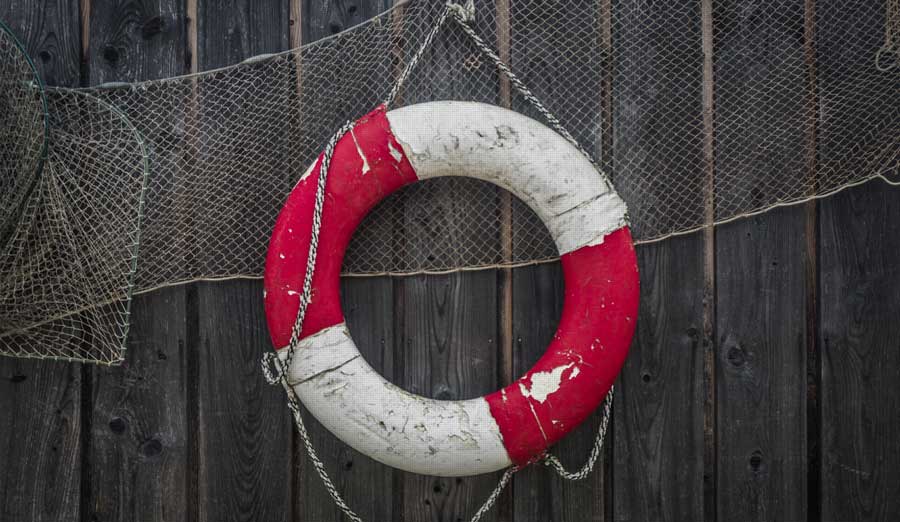Is it the first time you are presenting at a scientific conference? First time you’re traveling to an academic meeting, probably abroad, and talking about your research in front of a crowd of people you don’t know? Feeling a bit scared and intimidated? Did you get nervous when you looked in the calendar and realised it’s only six weeks away? Feel like you don’t know how you’re going to deal with the pressure? Don’t worry, you are not alone on the academic ocean! Let this post will be your life jacket and we’ll make sure you are prepared for the big day.
In our experience, we didn’t have a choice about giving our first conference presentation. Our supervisors approached us during our PhD studies and suggested we should go to this particular conference and present what we are doing. Huh? We had never done this before, although we had attended a few conferences already where we presented posters. Giving a poster presentation is the classical way of how young researchers get acquainted with conferences (for suggestions on how to do this properly, check our blog post #15: 5 smart strategies to get most out of conference posters”).
However, going on a conference and presenting a paper is another story all together! Of course, we had attended sessions where others had presented their work, but this is like taking a comfortable backseat compared to the driver. You lean back in the massive audience and enjoy what the presenter is telling you. Attending is a pretty anonymous thing, plus we didn’t have to do anything. Not so when you are the presenter! Then you have to stand out there in front of all these famous, well-respected and highly-experienced scientists, who know so much more than you do, and are much better at doing research and presenting. This is almost guaranteed to be embarrassing! What if they laugh at our talks and rip them into pieces when they ask questions?
Do these fears sound familiar to you when you think about your first research presentation at an academic conference? We know they do, so let’s give you two reasons why you should not worry too much about this first presentation:
- Established researchers will not sit in your audience and laugh at your presentation, because this is not how academic conferences work. This is also not how professional researchers conduct themselves. Good scholars, and our academic communities are full of them, are kind and gracious listeners to presentations made by junior faculty. They (hopefully) all remember their first presentations very well and the feelings that come with them. It was never an easy or comfortable task to present as a beginner in front of strangers.
- Of course, you might still be afraid that not everybody listening to you will fall into the respectful audience category we just described above. Don’t worry, in this case we’ve got you covered with our 17 life-saving tips!
By the way, both of our first presentations went very well. They were probably not spectacular, but they left us with no negative memories and as far as we can recall, no negative impression on the audience. We had no instructions on how to do these talks at all. We were literally sent off to deliver the talks blind, like good academic soldiers marching into battle. You deserve better!

We’ve prepared a list of 17 life-saving tips we want you to keep in mind when preparing and presenting for the first time. Caution: This list of actions will NOT immediately lift you up to the pro level. It is not a crash course in delivering the best presentation you could ever do with all the possible bells and whistles . No, we intend it to get you safely and comfortably through the ‘stormy waters’ of this first-time-experience so that you, as well your audience, will enjoy it. There are plenty of measures you can take to improve your talk on top of this, but let’s take it one step at a time. If you are totally new to your PhD project, we recently published a post to help you tackle this larger project with: “#24: New to the PhD – 5 tips for a great start!”.
Nevertheless, try out some of our 17 life-saving tips and you will be well-equipped for the rough winds that sometimes come up in academia:
Life-saver #1: Know what your message is
The best presenter and presentation techniques cannot help if the message is not clear. What is it exactly that you want to communicate in your talk? Start preparing by writing down the key message that you want to communicate on a sheet of paper. It should be a message that is easily understood and that you could easily talk about on any occasion.
Life-saver #2: Guide audience through structure
Take your presentation message, sit down, and think about the order of elements someone would need to describe to the audience for them to understand it. Typically, you start with a short intro about yourself, the topic and the specific research question that you addressed. Then, you follow with what you did and what you have found. Towards the end, you state your key message that you want the audience to remember. Probably, you also want to point out some of the open questions that resulted from your work. Make sure you have a clear beginning and a clear ending.
Life-saver #3: Don’t start on the computer
Start drafting the key message, the structure, and the details of your talk on a sheet of paper, or better yet, with a set of sticky notes. This is far more flexible and effective than starting on Powerpoint or similar software and filling in slides right away. You will put to much (irrelevant) content and effort into the slides. Get involved with slide ware only once you know exactly what will be part of your presentation, not before. The art of slide making is not to fill them quickly but to leave things out and reduce to what is absolutely essential.
Life-saver #4: Reduce and enlarge text
It is not helpful to present a lot of text on slides. Reduce it to a minimum, i.e. a few keywords on slides and learn the rest by heart so you can present it fluently. Put the text in a large font size, usually much larger than you think necessary. If you end up with slides that contain only a few words in large text size – nobody will be unhappy, because it is easier to follow.
Life-saver #5: Communicate visually
A lot of communication in science is in written form, but presentations have the benefit of adding visual aids. So, once you know what your key message is, can you come up with a set of 3-5 key images (photos, figures, graphs) that would help you to get the message across even better? There is nothing non-scientific about using images in a talk, because they help to convey your scientific message better and are more memorable than text. If you are not sure where to find good visuals, check out our blog posts #19: The 5 best free photo databases for your scientific presentations or #20: Best scientific photo databases”.
Life-saver #6: Rehearse your presentation
Rehearsing is all about reducing many of the fears that we have towards giving a talk. We recommend you rehearse multiple rounds, and do read throughs at least 10+ times for your talk. You will become more fluent and confident in what you present once you know it backwards and forwards. For tips on how to rehearse effectively, see our post #127: How to rehearse a scientific presentation.
Life-saver #7: Check the length of your presentation
Going over time is a common occurrence at conferences, but also a commonly condemned behaviour. Use a watch to check how long your presentation is. Start checking your time once you have some fluency in your delivery, so only after a couple of rehearsal rounds. If your talk is too long, cut something out. Only you will miss it.

Life-saver #8: Get somebody to listen to you
All the rehearsal in the world cannot help if you do not rehearse realistically, i.e. in front of other people. Find a colleague, a couple of PhD fellows, or some friends and deliver your test presentation to them. It will make you feel differently and this can really help you trouble-shoot the talk. Ask them for honest feedback and their suggestions afterwards. Since you’re presenting to other people at the conference, why not try it in the preparation phase?
Life-saver #9: Rehearse outside your comfort zone
If possible, try to also rehearse your talk in a room or a space which is different from where you usually are at your institute. It could be an empty classroom or lecture hall. This will already give you a feeling of how different it is to present in a room you are not familiar with in the preparation phase, which will be the case for your conference talk.
Life-saver #10: Anticipate questions from the audience
Many presenters fear the question that come from the audience after their talk more than the presentation itself. Prepare yourself: What potential questions could the audience ask? Think about good but short answers to them while still preparing your talk. We prepared a great overview of questions that you should always expect and have an answer in our post #30: Questions from the audience you should be prepared to answer.
Life-saver #11: Keep technology simple
Unless you are a well-versed user of presentation technology and gadgets, keep it simple for your first talk. Of course, there is a multitude of multi-media elements that you could employ, but the audience comes to hear something about your research and if you can do this without a heavy tech component, you take a heavy load off your shoulders. There’s nothing worse than a technological fail in front of a room of people you want to impress.
Life-saver #12: Prepare a backup strategy
Think about the what-ifs: If … your presentation does not work on the presenter laptop or if you realise you would need more time than allocated or if … whatever. Always have a digital and a paper copy of your presentation with you. The paper version could be annotated with coloured markers so you could use it if the technology fails. Rest assured: The vast majority of ifs very seldom happen, but it’s always better to be prepared!
Life-saver #13: Be at the venue in good time
You don’t want to rush in just before giving your talk, this would only increase your nervousness. If you have to travel to the conference, always arrive one day before the conference starts (or at least before your talk is on) at the venue. On the day of your talk, be at the venue in good time prior to your scheduled talk. You might have to deliver earlier because a talk that was supposed to come before yours was cancelled.
Life-saver #14: Check the room & equipment
Conference rooms and halls have a special atmosphere that can rub off on presenters. Checking out the exact room where you have to present will help you to get accustomed to the special set up of the room: How is the audience seated? Where is the presenter desk? How large is the room? … All these things impact you during your talk. Check it out the day before or at least an hour before your talk, and it will help you to cope with any of its particularities. Also, don’t forget to test your presentation file in the room – whether from your own or from a presenter laptop. Does your presentation display well?
Life-saver #15: Address the audience
At the beginning of your talk, welcome the audience and tell them how grateful you are they are all here to listen to you. Introduce yourself very briefly, unless a chair person has done so already (if so, thank the chair for the nice introduction). Address the audience again at the end of your talk and offer to answer questions.
Life-saver #16: Have a buddy in the audience
Being entirely on your own for your first conference talk can be difficult. Are you the only one from your institute or are there others? If possible, find a buddy to share the experience with, somebody who feels for you and supports you. Get this person into the audience, somewhere where you can see him or her. It will help a lot!
Life-saver #17: Get rid of the sticking point
Think about how you feel when you listen to presentations of other people. Is there one thing that comes to your mind where you say, this is what I would avoid doing at all costs? What is it? Write it down. Now, think about your own talk. How could you avoid this from cropping up? Implement the change and be happy that you removed the key problem that you have identified in other talks.

Conclusion
Your first presentation is a special thing! It is like going on your first long journey, or going abroad, all on your own, with just enough money to make it, and with many doubts and fears about what could happen, but also with many great expectations of how wonderful this trip could be! Like a first journey, a first presentation should be something to celebrate (or at least close to that), something you would like to, and most likely will do, again and again.
The first presentation is a unique experience. It’s a right of passage that all researchers go through at some stage. Whether it’s your own motivation that brings you to a conference presentation, or a supervisor encourages you to go for it, it’s a great thing to do. For the first time, you”ll actively interact with your academic peers from all over the country or even world! You speak and they will listen- wow!
Nerves play a vital role in this process, as we know. But if you think they are getting the best of you, check our post #3: “How to cope with stage fright?”, which will gives more advice on how to prepare yourself against unproductive anxiety. When you manage to follow the steps we’ve outlined above, you can rest assured, it will be a fine presentation. We wish we could have had such a life-saving list back then!
Relevant resources:
- Smart Academics Blog #3: How to cope with stage fright?
- Smart Academics Blogt #7: Why your next presentation matters
- Smart Academics Blog #11: How much time is needed to prepare a good presentation?
- Smart Academics Blog #15: 5 smart strategies to get most out of conference posters
- Smart Academics Blog #19: The 5 best free photo databases for your scientific presentation
- Smart Academics Blog #20: Best scientific photo databases
- Smart Academics Blog #24: New to the PhD – 5 tips for a great start!
- Smart Academics Blog #30: Questions from the audience you should be prepared to answer
- Smart Academics Blog #95: Apply these 5 tips to improve any presentation
- Smart Academics Blog #127: How to rehearse a scientific presentation.
Relevant courses and services:
- 1-day course: Presenting successfully at virtual conferences
- 3-day course: How to present at international conferences
- 1-to-1 advice: Presentation Check
More information:
Do you want to present successfully at conferences?
If so, please sign up to receive our free guides.
Photos by Jonas Kohl, Ian Wagg and Jared Berg on Unsplash.com.
© 2019 Tress Academic
#FirstPresentation, #FirstConference, #ScientificPresentation, #ScientificConference
